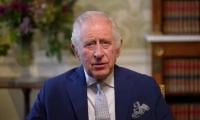Pakistan’s economy is going through a familiar boom-and-bust cycle that sees it back at the door of the International Monetary Fund (IMF). Debt is soaring, inflation is rocketing, reserves are falling and the currency has been devalued multiple times. After lengthy negotiations, Prime Minister Imran Khan’s government is poised to receive the country’s 13th bailout in the last three decades, Bloomberg reports.
What’s the history?
In 2013, then-Prime Minister Nawaz Sharif agreed to terms for an IMF loan of $6.6 billion disbursed over 36 months. During that time, the government mostly fell short of its pledges to broaden the tax base or privatise money-losing state-owned companies.
Nevertheless, the economy rebounded after the IMF programme, with growth accelerating, stocks soaring, the currency stabilising and foreign-exchange reserves tripling to a record. All of that came undone in 2017 as higher oil prices and the boom in growth -- along with billions of dollars in Chinese infrastructure investment -- pushed up demand for imports. The current-account gap started to widen and reserves fell, triggering a 20 percent slump in the nation’s currency last year and pushing the benchmark KSE-100 Index of stocks to around three-year lows.
What will the new bailout look like?
Pakistan and the IMF have tentatively agreed on a 39-month loan of about $6 billion, pending management and executive board approval, IMF’s mission chief Ernesto Ramirez Rigo said on May 12. The IMF says the loans are intended to support the government’s strategy to promote economic growth by curbing deficits, reducing inflation, strengthening tax collection and administration and recouping revenues from state-owned enterprises, and increasing social spending. Possible measures include raising taxes, reducing energy subsidies and selling state companies, while the IMF is also in favour of a “market-determined” exchange rate.
How urgent is the need?
When Khan took office in 2018, Pakistan’s economy was already in crisis. Foreign-exchange reserves plunged by almost half to about $7 billion last year, and the government was running current-account and budget deficits of more than five percent of gross domestic product. That meant less foreign funding to repay debt and pay for much-needed imports to keep the economy going. While reserves have rebounded this year after Pakistan secured loans from friendly nations like China and Saudi Arabia, new risks have emerged: inflation has climbed to more than eight percent, the nation’s credit ratings have been cut to well below investment grade and economic growth is slowing. The IMF is projecting growth will slow to 2.9 percent in 2019 from 5.2 percent last year and reach 2.8 percent in 2020.
Will this time be different?
Time will tell. Khan has overhauled his economic team, including the installation in May of Reza Baqir, who previously served in senior positions at the IMF, as the central bank governor. His predecessor was fired along with the chief of the tax-collection agency over their “performance”. Khan also appointed Abdul Hafeez Shaikh as his finance adviser after forcing Asad Umar to resign in a cabinet shuffle in April. Much will depend on how successful the new team is in implementing the IMF’s loan conditions and whether measures like higher taxes and energy prices will hurt the prime minister’s political standing.
Does Pakistan have other options?
Khan has also secured $3 billion in financing each from Saudi Arabia, the United Arab Emirates and China. China has been playing a bigger role in Pakistan’s economy, financing billions of dollars of power and road projects as part of its Belt and Road programme, funding that typically doesn’t come with the kind of strings attached to IMF loans. In his visit to Pakistan earlier this year, Saudi Crown Prince Mohammed Bin Salman pledged $20 billion in investment in Pakistan, including in an oil refinery, although no agreements have been signed yet.















